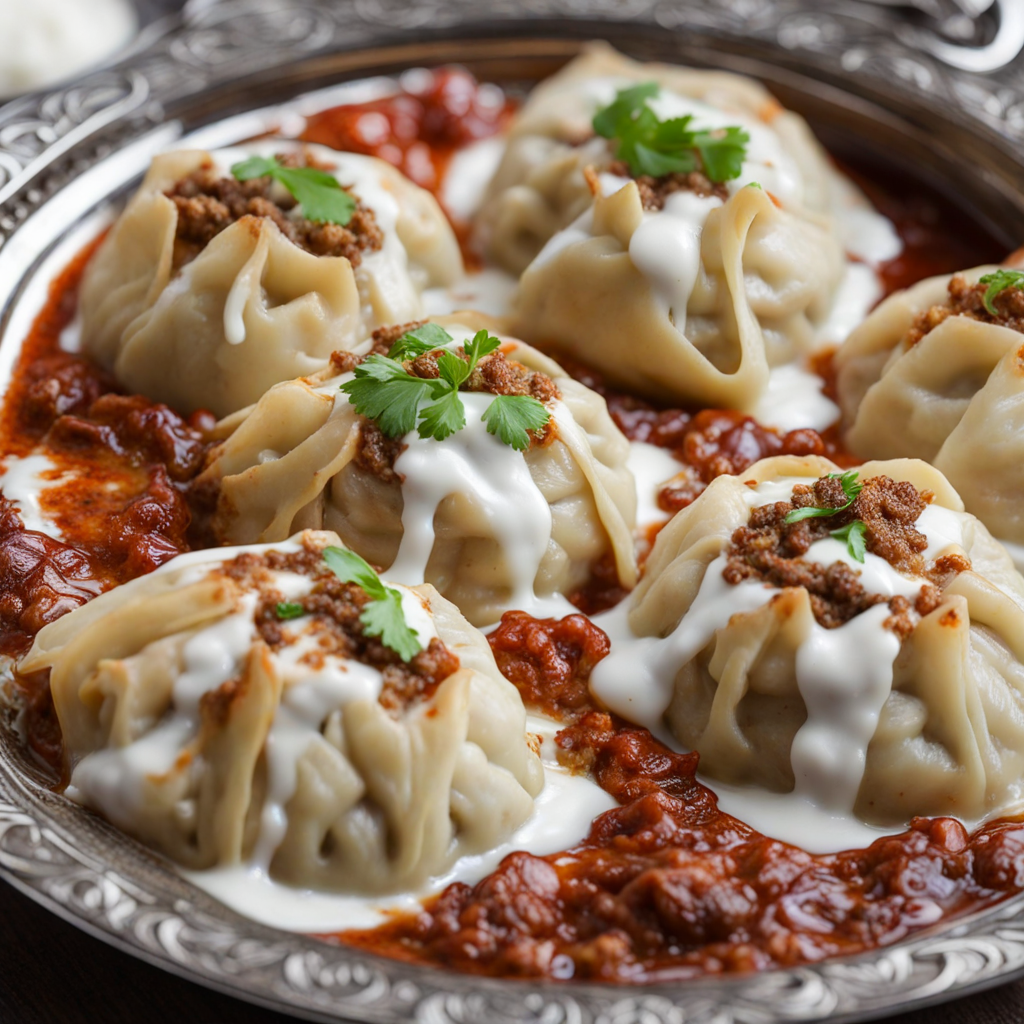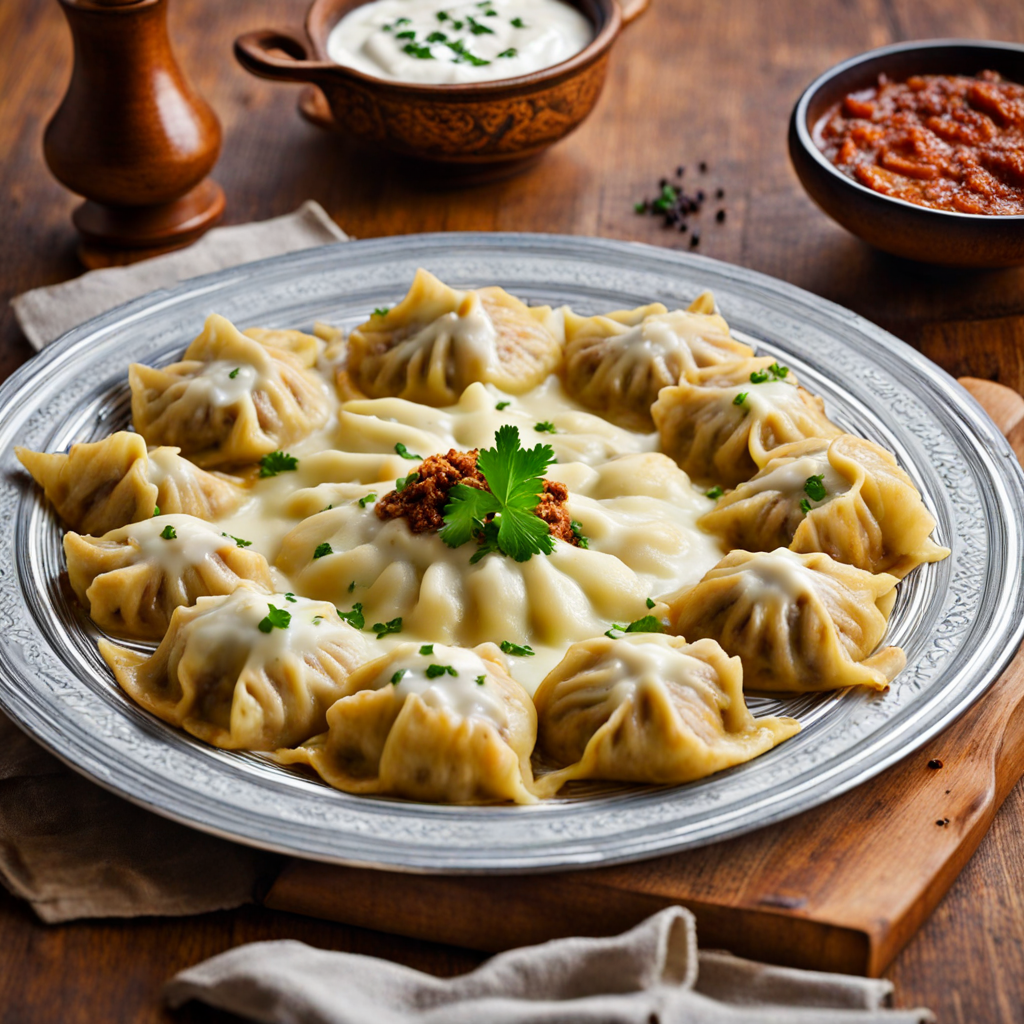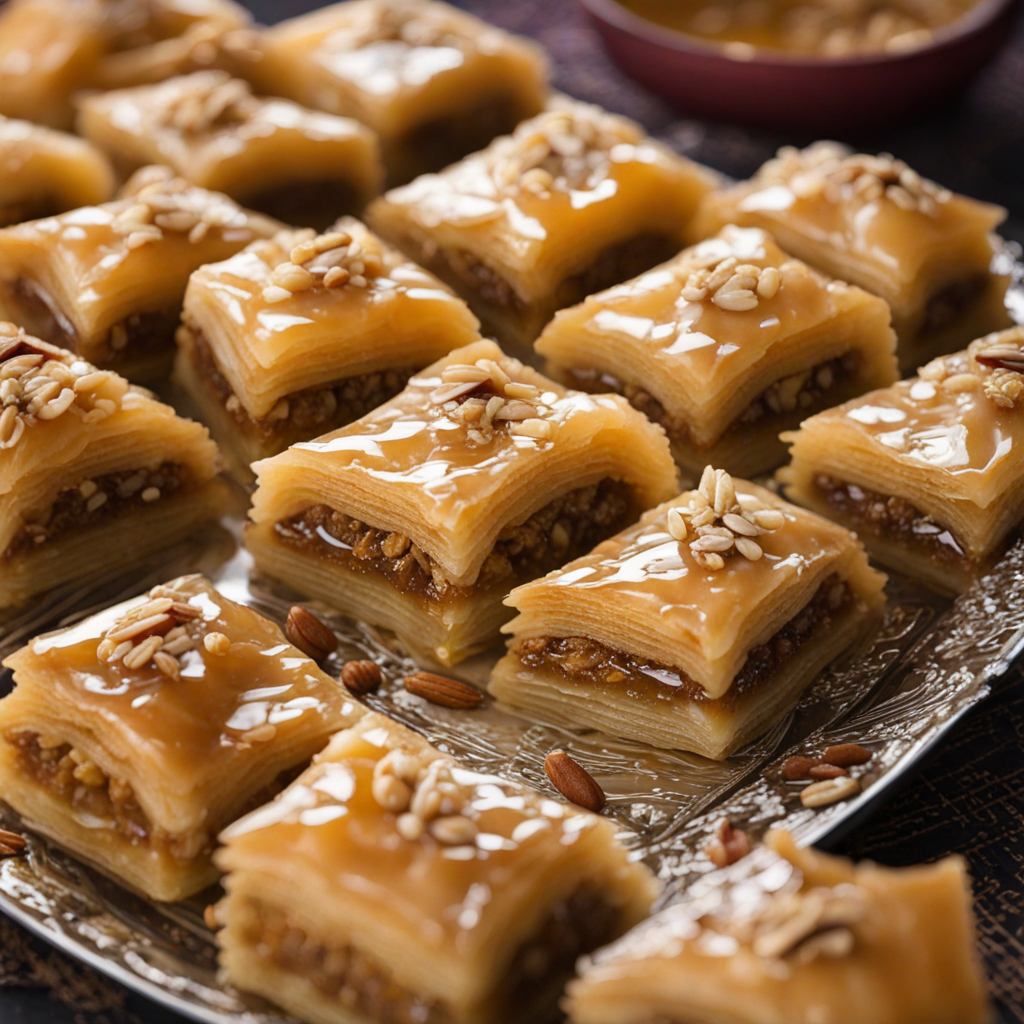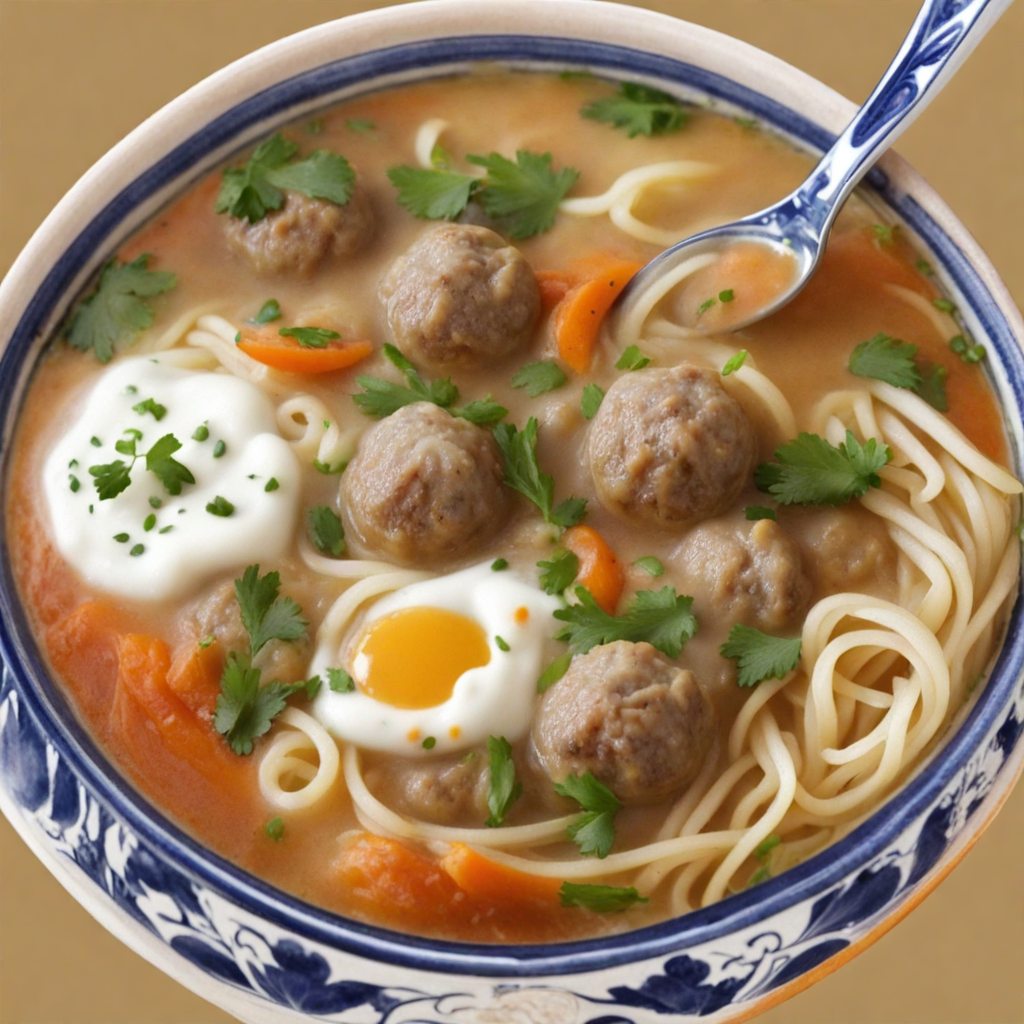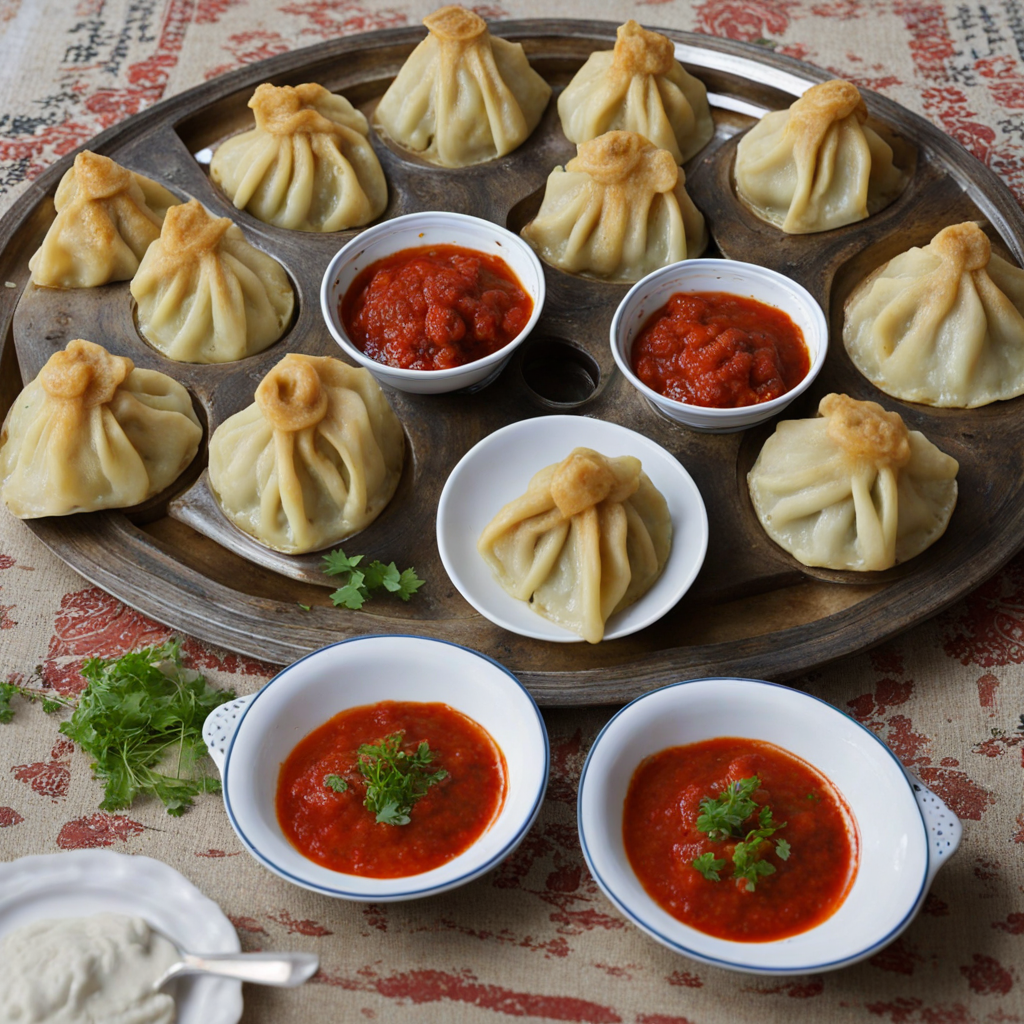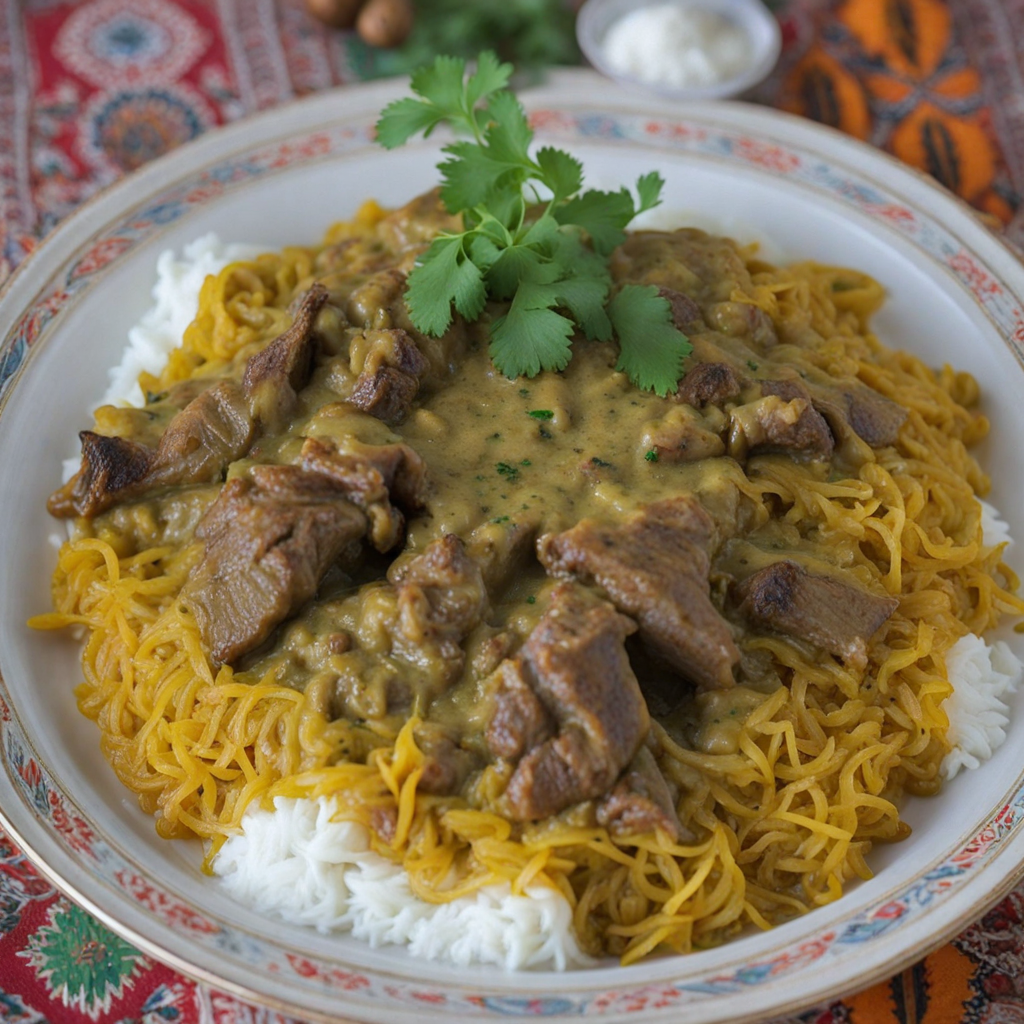Mantu
Mantu is a delightful Afghan dish that beautifully marries flavors and textures, making it a must-try for any food enthusiast. These steamed dumplings are typically filled with a mixture of minced meat, usually lamb or beef, combined with onions and various spices like cumin and coriander. The dough is made from simple ingredients such as flour and water, which is rolled out into thin circles, wrapped around the savory filling, and then expertly folded to create a perfect pocket of flavor. The steaming process ensures that the dumplings remain tender and moist, allowing the rich filling to shine through in every bite. What sets Mantu apart is not just its delicious filling but also the accompanying sauces that elevate the dish. Traditionally, Mantu is served with a drizzle of tangy yogurt sauce, often garnished with garlic and mint, which adds a refreshing contrast to the richness of the meat. Additionally, a spicy tomato-based sauce is often poured over the dumplings, infusing them with a deep, savory flavor that complements the spices in the filling. This combination of sauces creates a beautiful harmony of taste and texture, making each bite a new experience. The presentation of Mantu is as appealing as its taste. Typically arranged on a platter, the dumplings are often garnished with fresh herbs, such as cilantro or parsley, and sometimes with a sprinkle of red chili powder for a pop of color. The dish can be enjoyed as an appetizer or a main course, and it’s often accompanied by traditional Afghan bread. Whether served at a family gathering or a festive occasion, Mantu embodies the warmth and hospitality of Afghan culture, inviting you to savor the richness of its culinary heritage.
How It Became This Dish
Origin of Mantu Mantu, a cherished dish in Afghan cuisine, traces its origins back to the ancient Silk Road, where diverse cultures and culinary traditions mingled. This dumpling, filled with spiced meat and onions, is believed to have been influenced by Central Asian, Middle Eastern, and South Asian cuisines. The term 'mantu' is derived from the Mongolic word for dumpling, which indicates the historical interaction of nomadic tribes and settled communities along trade routes. The earliest records of dumplings resembling mantu can be found in the culinary practices of the Mongols and Turks, who traveled these paths. The art of dumpling-making spread across regions, with each culture adding its own twist. In Afghanistan, mantu became a staple, reflecting the agricultural abundance of the region, particularly the use of lamb, beef, and aromatic spices. Cultural Significance Mantu holds a special place in Afghan culture, often served during significant celebrations, family gatherings, and religious occasions. Its preparation is not merely about cooking; it is an event that brings families and friends together, fostering cooperation and a sense of community. The making of mantu is often a communal activity, where family members gather to fill and fold the dumplings, creating bonds and sharing stories. In Afghan weddings, mantu is frequently included in the feast, symbolizing prosperity and good fortune. The dish represents hospitality, as offering food to guests is a foundational aspect of Afghan culture. The unique blend of spices and ingredients in mantu also reflects the rich tapestry of Afghan heritage, showcasing the fusion of flavors that characterize the country’s culinary landscape. Ingredients and Preparation Traditionally, mantu is made using a simple dough of flour, water, and a pinch of salt. The filling typically consists of finely minced lamb or beef, mixed with onions, garlic, and a variety of spices such as cumin, coriander, and black pepper. In some regions, variations may include the addition of pumpkin, lentils, or vegetables, catering to local tastes and dietary preferences. The preparation process involves rolling out the dough into thin sheets, cutting them into circles, and placing a spoonful of the filling in the center. The edges are then folded and pinched together to create a pleated dumpling. Once assembled, mantu can be steamed in a traditional steamer or pot, allowing the flavors to meld beautifully. Mantu is often served with a distinctive sauce made from yogurt, garlic, and a sprinkling of dried mint or a tangy tomato sauce. This accompaniment elevates the dish, adding a refreshing contrast to the rich filling. Regional Variations While mantu is widely recognized as an Afghan dish, it also has regional variations across neighboring countries. In Pakistan, for instance, a similar dish called 'mantu' is made, often with unique spices and herbs that reflect local tastes. Afghanistan’s rich history of migration and trade has resulted in a culinary exchange that has allowed mantu to adapt and evolve. In Central Asia, particularly in countries like Uzbekistan and Tajikistan, similar dumplings are known as 'manti.' These variations may include different fillings, preparation methods, and serving styles. The influence of Persian cuisine is also evident in the way mantu is served, often accompanied by saffron rice or enjoyed alongside grilled meats. The adaptability of mantu showcases its resilience and enduring appeal, as it continues to be a beloved comfort food for many Afghans, whether at home or in diaspora communities around the world. Modern Influence In recent years, mantu has gained international recognition as Afghan cuisine has begun to attract attention beyond its borders. Afghan restaurants in various countries have introduced mantu to diverse audiences, allowing people to experience this traditional dish. The globalization of food culture has led to a resurgence in interest in ethnic cuisines, and mantu stands out as a dish that embodies the warmth and hospitality of Afghan culture. Food festivals and cultural events often feature mantu as a highlight, showcasing its importance within Afghan gastronomy. Chefs and home cooks alike experiment with fusion recipes, incorporating mantu into contemporary dining experiences while still respecting traditional methods and flavors. As Afghan diaspora communities continue to grow, mantu has become a symbol of identity and heritage, serving as a connection to their roots. It is often prepared in homes during gatherings, reminding families of their cultural background and the stories passed down through generations. Conclusion Mantu is more than just a dish; it is a representation of Afghanistan’s rich history, cultural significance, and the spirit of community. From its ancient origins along the Silk Road to its modern adaptations, mantu has evolved while remaining rooted in tradition. As it continues to bring people together, both in Afghanistan and abroad, this beloved dumpling stands as a testament to the enduring power of food in fostering connections and preserving heritage.
You may like
Discover local flavors from Afghanistan


